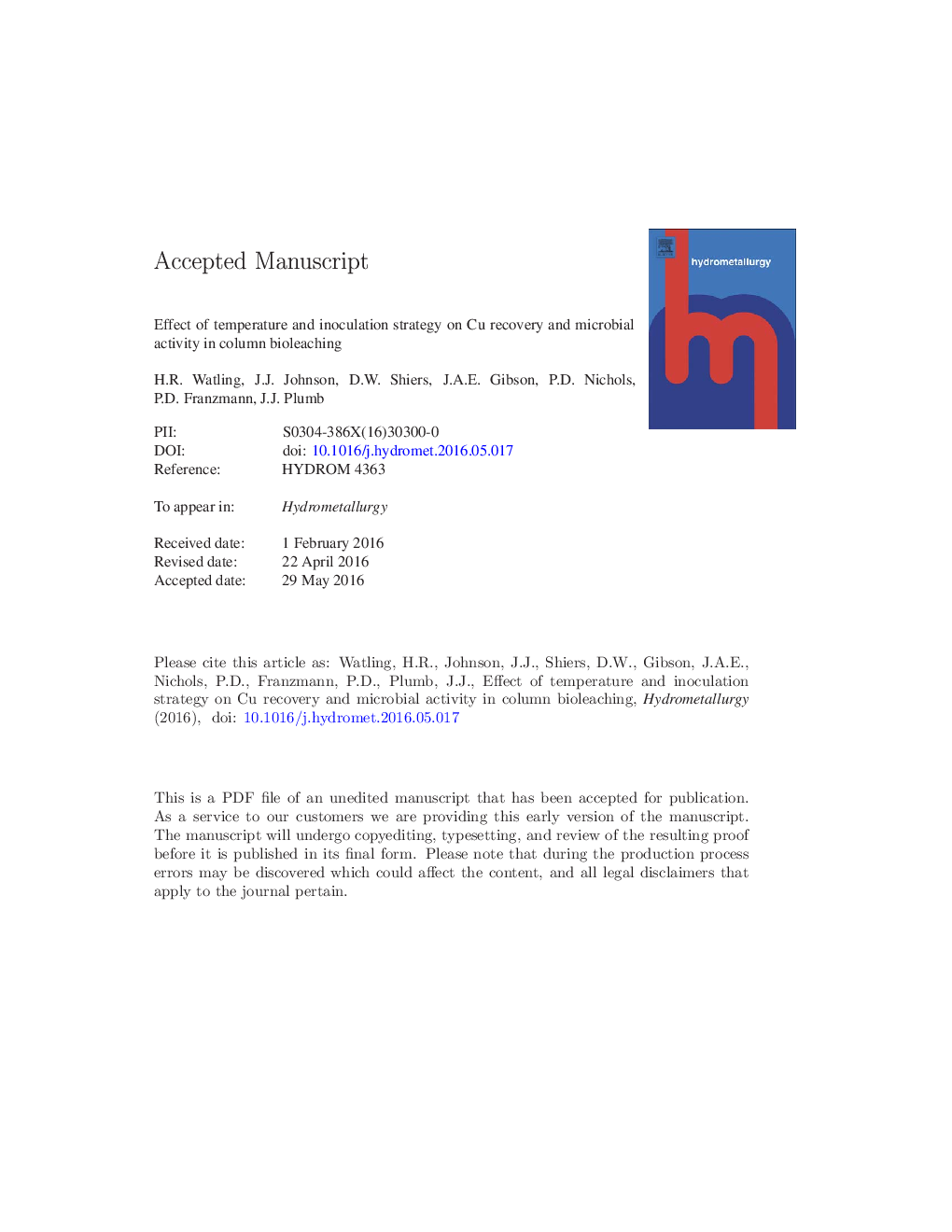| Article ID | Journal | Published Year | Pages | File Type |
|---|---|---|---|---|
| 6659191 | Hydrometallurgy | 2016 | 50 Pages |
Abstract
The effect of increasing temperature from 30 to 60 °C on iron (II)-oxidation activity and microbial population development in columns was investigated. With respect to 'mode of inoculation', pre-inoculation of the ore with a mixed culture resulted in a shorter lag time during which the microorganisms established themselves on the ore. Inoculation with the bacteria was successful using current techniques but inoculation with hyper-thermophiles appears to require special enrichment and acclimatisation strategies to maximise success. Staged inoculation of bacteria at their preferred temperatures did not confer additional advantage. Inoculation during acid agglomeration was impacted by exposure to initially high acidity. With respect to population development, the combined tracking methods (signature lipids and denaturing gradient gel electrophoresis (DGGE)) provided valuable insights into the thermal tolerance of some microbial strains in a column environment and also detected new strains.
Related Topics
Physical Sciences and Engineering
Chemical Engineering
Chemical Engineering (General)
Authors
H.R. Watling, J.J. Johnson, D.W. Shiers, J.A.E. Gibson, P.D. Nichols, P.D. Franzmann, J.J. Plumb,
